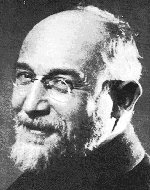
But don't be deceived, cautions David Jalbert, who has recorded Satie's Trois Gymnopédies on ATMA Classique: In fact, many pianists are drawn to these pieces because they're so easy to play. They're also decidedly anti-virtuosic: You don't need to be Franz Liszt to make music on the piano, he seems to be saying. With their winding, quarter-note melodies and slowly waltzing left-hand accompaniments, they're often found on relaxation compilations. The obvious place to start is Trois Gymnopédies for solo piano, Satie's best-known compositions. Here are 10 essential pieces to complete the Satie picture. Because of his famous down-tempo piano music from the 1880s and '90s, with no emotional highs or lows, he has been dubbed the father of ambient music, which is apt, but only tells part of his story. He even wrote silly articles for Vanity Fair, including this one about his admiration for animals, which includes the line, "I like chickens, sheep, ducks, smoked salmon, beef and turkey stuffed with chestnuts." He gave his compositions absurd titles, made up words and filled his scores with instructions like "wonder about yourself" or "open your mind." When he quoted other composers' music, it wasn't to be respectful.
COMPOSER SATIE FULL
And yet, his music is full of gags, some at the listener's expense. Debussy, Ravel and Stravinsky all cite Satie as an important influence, and his currency with the leading artists and poets of his day was high. 16 June 2023.Erik Satie's music is better described by what it isn't than what it is.Ī contrarian, he wrote anti-emotional, anti-virtuosic and anti-Wagnerian music, basically rejecting all the major trends of 19th-century classical music and blazing a new trail - maybe unwittingly - for modernism.īut was he serious? Yes and no. "Satie, Erik." Discography of American Historical Recordings. In Discography of American Historical Recordings. Philadelphia Orchestra Leopold Stokowskiĭiscography of American Historical Recordings, s.v. No recordings issued from other masters.īoston Symphony Orchestra Serge Koussevitzky = Recordings were issued from this master. = Recordings are available for online listening.


In addition to his body of music, Satie left a set of writings, having contributed work for a range of publications from the dadaist 391 to the American culture chronicle Vanity Fair. Later, he also referred to himself as a "phonometrician" (meaning "someone who measures sounds"), preferring this designation to that of "musician", after having been called "a clumsy but subtle technician" in a book on contemporary French composers published in 1911.

His work was a precursor to later artistic movements such as minimalism, repetitive music, and the Theatre of the Absurd.Īn eccentric, Satie was introduced as a "gymnopedist" in 1887, shortly before writing his most famous compositions, the Gymnopédies. Satie was an influential artist in the late 19th- and early 20th-century Parisian avant-garde. Éric Alfred Leslie Satie ( UK:, US:, French: – 1 July 1925), who signed his name Erik Satie after 1884, was a French composer and pianist.


 0 kommentar(er)
0 kommentar(er)
